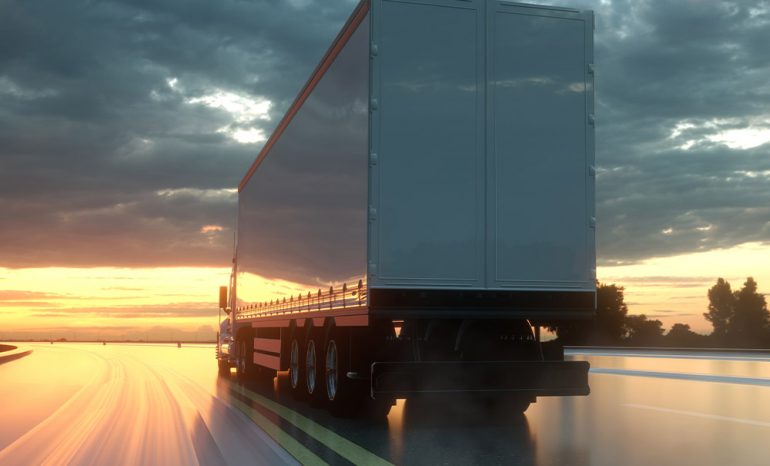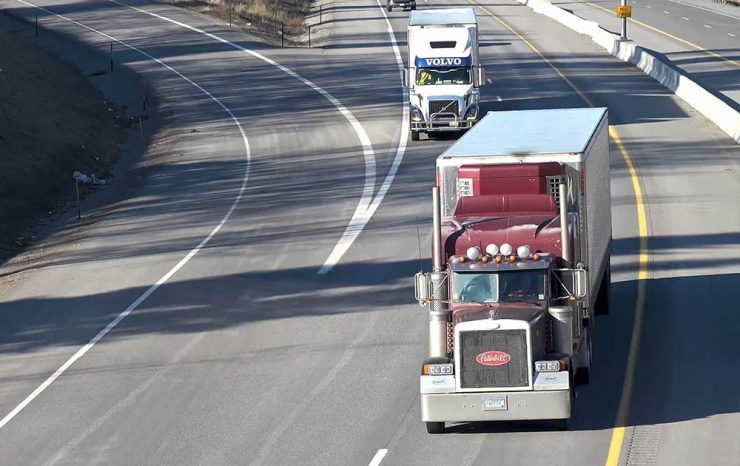Truck skidding is one of the scariest things that can happen to a truck driver. Losing control of your vehicle is never a good thing, especially when you’re driving an eighteen-wheeler. Whether you’re a company driver, owner operator, or lease owner, you want to avoid skidding by all means. Here are some tips on how to minimize the risk of a skid happening and keep yourself and other motorists safe on the road.
Don’t Slam the Brake!
Slamming the brake is the most common reason for truck skidding. This is very dangerous when driving on icy roads because it can cause your brakes to lock up. When that happens, you lose control over your vehicle and your trailer could start sliding. Instead of slamming, you should feather the brakes. Feathering the brakes means applying light and consistent pressure on the brake pedal, and adjusting the pressure as needed. This mimics the function of ABS (anti-lock braking system). ABS is activated when there is a need for feathering the brakes, but it shouldn’t be completely relied on since its malfunction could have dire consequences. Another danger of slamming the brakes is that the vehicles behind you might not have enough time to slow down and stop, which can cause further problems.
 Source: Freepik
Source: Freepik
Try Using the Jake Brake
Using the Jake brake on slippery roads is not generally recommended, but some experienced drivers know how to use it to their advantage even in these conditions. If you feel you are experienced enough, you can use it as well, but do it with caution. It’s best to use the Jake brake in the lowest position and it’s very important to keep your trailer perfectly straight while braking.
Get to Know your Truck
Knowing your truck through and through is the most important road safety tip for every trucker. It’s essential to know exactly how the current weight of your truck impacts your braking capability so that you can estimate the safe stopping distance. This is even more important when driving in winter conditions, of course. You have to get used to your brake pedal as well so that you know what’s the right amount of pressure you should apply when stopping or slowing down.
 Source: Freepik
Source: Freepik
Keep the Proper Speed
Maintaining the proper speed on an icy road doesn’t just mean respecting the speed limit. It means you should estimate the speed that will allow you to brake properly considering the weight of your truck and the road conditions.
Stopping Distance is Important
As we already suggested, it’s essential to always know what’s the minimum stopping distance that you need. There are several factors that determine your stopping distance – your speed, the truck weight, your load’s height, and the road conditions. Icy road means that you need more distance than usual since you have to use the brakes more gently. It’s a good rule of thumb to always overestimate the stopping distance, just to be sure.
 Source: Freepik
Source: Freepik
The Trailer Must be Kept Straight
If your truck and trailer are pointed in different directions while braking, momentum, and inertia will cause skidding, and possibly even jackknife. We already mentioned this in the Jake brake section, but it also applies to regular braking. You should always be aware of the position of your rig so that you can react accordingly in unexpected situations.
Learn the Route
Getting familiar with your route in advance is one of the most important steps in pre-trip preparation. It’s especially important in the winter conditions. Steep elevations on the road will impede your braking abilities, so it’s best to avoid them if you can. You can also pay attention to the busiest time of the day for certain roads so that you can plan your trip around it.
 Source: Freepik
Source: Freepik
Always Have a Plan B
You should do everything you can to avoid truck skidding, but it’s best to have a plan B in case something goes wrong after all. It’s not possible to avoid skidding 100% of the time, and sometimes it’s just not up to you. So, if your truck starts skidding, you should be prepared to act quickly. If your back front wheels skid, you should brake very lightly until the truck stops completely. If the rear wheels start to skid, you shouldn’t touch the brake pedal at all until the skidding stops. And if the truck starts skidding because of the icy road, you should engage the clutch and steer gently in the direction you want your truck to take.
How to Avoid Skid if you are Mountain Driving?
Mountain driving is especially hard on the brakes. Mountain roads are often windy, so you have to use the brakes almost constantly when driving downhill. This puts strain on the brakes because the increased friction causes them to heat up very quickly. This is why feathering the brakes is even more important when driving in the mountains. Feathering allows the air to get between the brake and the drum, which cools down the system. If brakes don’t cool down properly, they can lose their function temporarily, and you could even experience full brake failure. ABS takes care of all of this for the driver, but only when it’s functioning perfectly. Since you can’t always test it to make sure it’s working, it’s best not to rely on it if you don’t have to.
 Source: Freepik
Source: Freepik
Truck skidding can happen in any road conditions, but icy roads enhance the risk significantly. Because of this, knowing how to avoid and handle truck skids can be added to your list of winter essentials. Follow us for more tips on our YouTube channel Extra Mile International Inc Trucking Company, and visit our Instagram profile @extramiletx.
Have a nice trip!

Mia is a Fleet Manager and Recruiter at Extra Mile International, based in Chicago. Mia is over 5 years in the trucking industry while driving trucks for more than 3 years.




